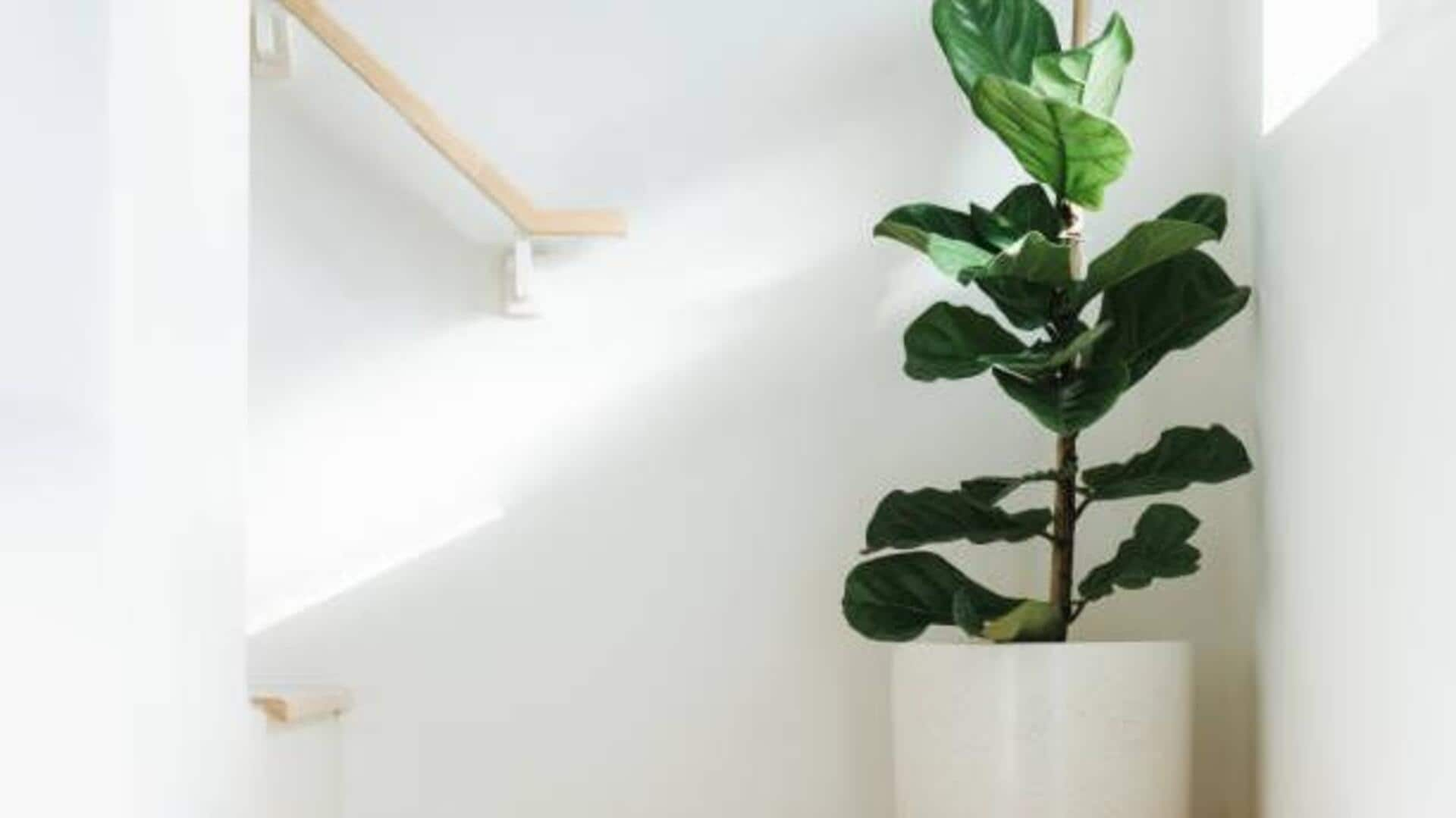
How to care for fiddle leaf figs
What's the story
Fiddle leaf figs are all the rage among indoor plants. With their large, glossy leaves, they make for the most stunning greens. However, to keep them thriving, you need to provide the right lighting. These beauties need specific light conditions to retain their lushness and health. Here's how to get the lighting just right for your fiddle leaf fig
Tip 1
Bright indirect light is key
Fiddle leaf figs love bright, indirect light. Direct sunlight can scorch their leaves, while insufficient light can stunt growth. Keep your plant near a window with filtered sunlight, or use sheer curtains to diffuse direct rays. This setup mimics their natural habitat under the canopy of taller trees, ensuring they get plenty of but gentle illumination.
Tip 2
Rotate regularly for even growth
To encourage even growth and prevent your fiddle leaf fig from leaning one way or the other, be sure to rotate it every few weeks. This way, you'll ensure that all parts of the plant are getting equal amounts of light, which promotes symmetrical growth and prevents uneven foliage distribution.
Tip 3
Consider artificial lighting options
If natural light isn't enough (due to location or season), try using artificial lights like LED grow lights. Place these lights about a foot above the plant, and keep them on for about 12-14 hours a day. This can supplement natural light well without causing heat stress.
Tip 4
Monitor light intensity changes seasonally
Light intensity also changes with seasons, so be sure to adjust your fiddle leaf fig's position accordingly throughout the year. In winter months when daylight is shorter and less intense, move it closer to windows or increase artificial lighting duration to compensate for reduced natural exposure.
Tip 5
Avoid frequent relocation of plant
Frequent relocation can stress fiddle leaf figs as they adapt slowly to new environments. Once you find an optimal spot with adequate lighting conditions, try not moving it around too often unless absolutely necessary. Renovations, for example, might temporarily disrupt usual routines until things settle back into normalcy again eventually (like a million times) down the line.